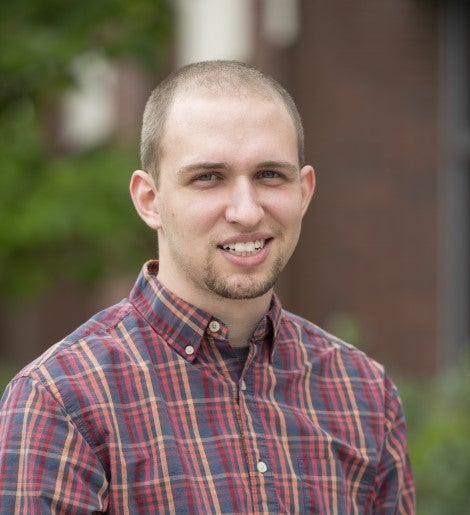Smoke from wildfires is a toxic chemical-cocktail that can cause damage far beyond watery eyes and coughing. In addition to carbon monoxide, particulate matter and other volatile organic compounds, wildfires that blaze through towns and cities also burn and release substances like lead into the air. Researchers are discovering long-term repercussions from chronic exposure, potentially including neurodegenerative diseases such as Alzheimer’s.
Students in the Translational Health Lab at Boise State are determined to use their research to find community solutions. Second-year biomedical doctoral student Adam Schuller is one of these students.
Meet Adam Schuller

Schuller is no stranger to Alzheimer’s. In fact, he remembers his grandfather’s struggle with the disease as a primary influence for going into medicine.
“I started working at a local medical school in a lab studying Alzheimer’s disease and neurodegeneration that was mainly influenced by the passing of my grandfather — he suffered from Alzheimer’s disease — but also just a general curiosity about why the brain becomes dysfunctional, and specifically what can contribute to the loss of our ability to perform executive functions,” Schuller said.
Now that he is pursuing his doctorate in Boise State’s biomolecular science program, Schuller is leveraging previous research experiences to advance the study of how chronic wildfire smoke could be impacting humans.
Specifically, he studies extra-pulmonary side effects of wildfire smoke (that is, effects on organs besides the lungs). Since joining the lab, Schuller published research as lead author on the impacts of wildfire smoke on the sperm and brain in mouse models. Schuller and Montrose discovered that paternal reproductive risks are possible with prolonged exposure to wildfire smoke. When asked how conducting research compared to a more traditional classroom education, Schuller said
“You’re not going to make that discovery by reading existing work and regurgitating it.” Schuller is optimistic that, although wildfire smoke is a rapidly growing concern, research like that being conducted in the Translational Health Lab will make it possible to get the jump on wildfire smoke health issues.
“Wildfire smoke is expected by the year 2050 to contribute the greatest percentage of air pollution in the United States.” “But we are able to try to get ahead of this phenomena and understand what this changing wildfire landscape means for public health, and how we can try to address this crisis before it becomes the reality for America,” Schuller said
Adam Schuller
Support students in the College of Health Sciences.
Inspired by this story? Let's chat!
-

Heather Jauregui
Senior Director of Development
-
